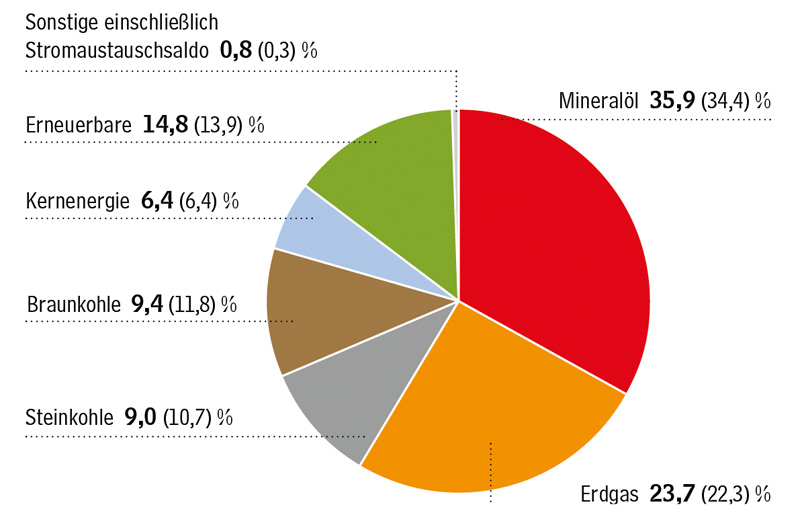Energy consumption in Germany will fall again this year. Based on the current figures for energy consumption in the first nine months, the Working Group on Energy Balances (AG Energiebilanzen), Berlin and Bergheim, expects a decline in energy consumption in Germany of a good 2 % to roughly 12,810 PJ (437 M t of coal) for the entire year (Figure 1). As the consumption of coal was rapidly declining and renewable energies continue to increase, the AG Energiebilanzen assumes a noticeable decline in CO2 emissions.

Fig. 1. Development of primary energy consumption in Germany 1995 – 2019 (forecast) in petajoules (PJ). // Bild 1. Entwicklung des Primärenergieverbrauchs in Deutschland 1995 – 2019 (Prognose) in Petajoule (PJ). Source/Quelle: AGEB
According to preliminary calculations by the AG Energiebilanzen, energy consumption in Germany dropped by 2.3 % to 9,258 PJ or 315.9 M t of coal in the first nine months. The AG Energiebilanzen attributes the lower consumption to improvements in energy efficiency, substitution in the energy mix, the decline in energy consumption due to the economic situation in the energy-intensive industry sectors, as well as the continuing structural transformation. The slightly cooler weather conditions, the increase in the population, as well as slightly growing economic output, pushed up consumption. Overall, the factors contributing to higher consumption were significantly below those leading to lower consumption. Adjusted for the impact of weather conditions, the decline is expected to be a good 3 % according to calculations by the AG Energiebilanzen.
During the first nine months of this year, mineral oil consumption was a total of 1.9 % above that of the previous year‘s figure. While the consumption of diesel and petrol remained at the level of the previous year, there was an increase in aviation fuel of 4 % and the use of light heating oils saw a rise of around 25 %. In contrast, the supplies of petroleum to the chemicals industry reduced by around 11 % due to the economic situation.
Gas consumption rose by 3.9 %. Apart from the high heating requirements in the cooler spring months, the increased use of gas in power plants also contributed to this increase.
Coal consumption registered substantial falls and in the first nine months decreased by more than 18 % overall compared to the same period last year. In the power and heat generation sector there were declines of over 30 %, as more electricity was generated from renewable energies and gas. The steel industry reduced its use by a good 3 %.
The consumption of lignite was also in the minus in the first nine months and reduced by 21.7 %. The supplies to the lignite-fired power stations also fell considerably due to the safety preparedness of other power plant blocks, the reduced handling in the surface mine, a higher number of power plant upgrades compared to the previous year, as well as the increase in electricity generation from renewable energies.
Compared with the previous year, nuclear energy saw a decrease of power production by a good 3 %. At the end of this year another nuclear power plant (Philippsburg) will be decommissioned.
Renewable energies increased their contribution to the overall energy consumption in the first nine months of the year by 4 %. Wind power increased its contribution by 17 %. For hydropower there was an increase of 8 %. Solar energy only increased slightly by 1 % and biomass remained at the level of the previous year. The percentage of renewable energies in the overall primary energy consumption increased to 14.8 %. (AGEB/Si.)

